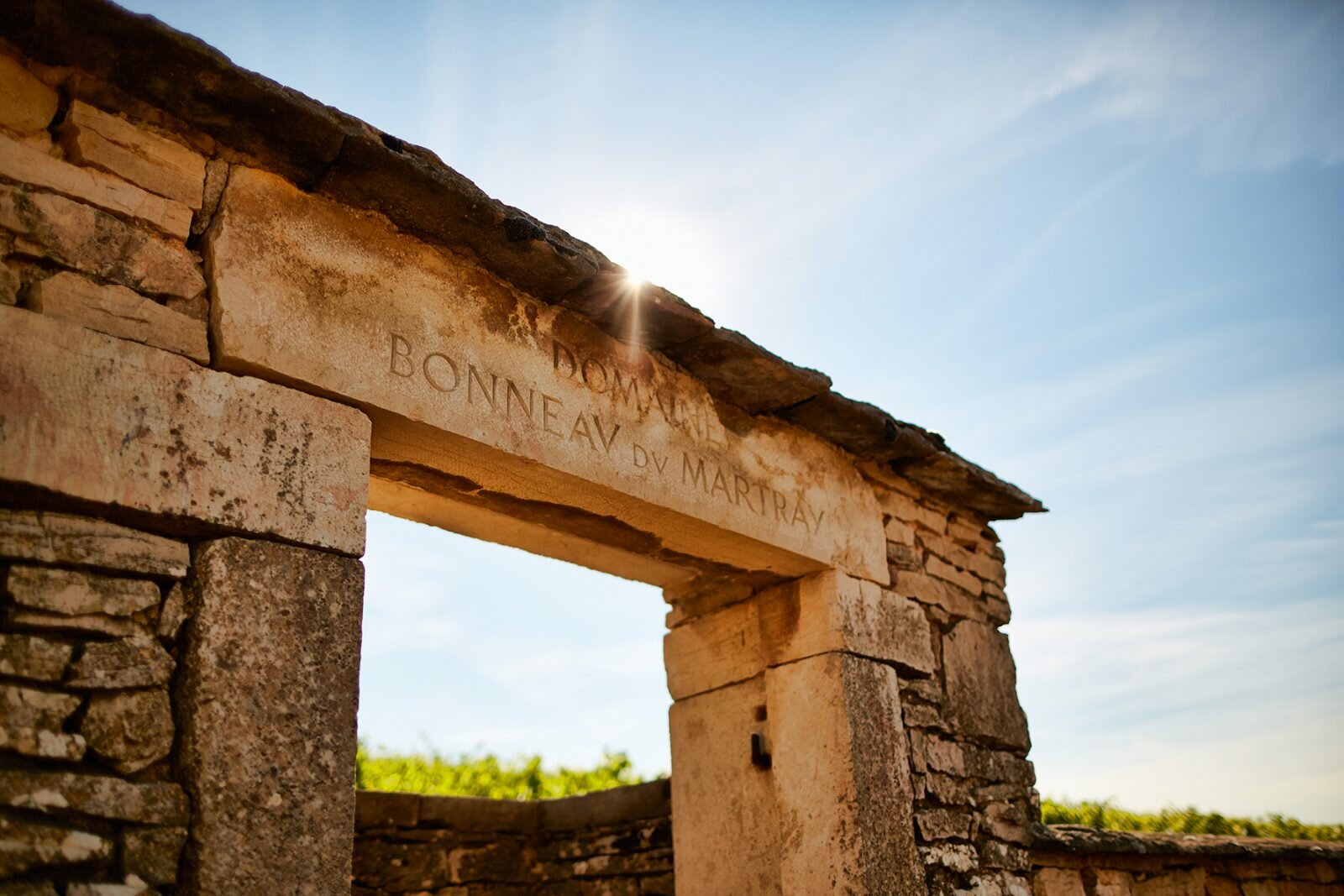Ordinarily it would have been considered a touch late for a masterclass. But in my opinion, Saturday evening at 9pm is the finest hour for enjoying good wines in the presence of good company. With a six-hour time difference, Burgundy’s Hill of Corton in the Côte d’Or would be an absolute vision under the afternoon sun. And it was.
With my co-host Thibault Jacquet speaking to us directly from the vineyards — literally sitting his bottom down on Burgundy’s hallowed marl and limestone dirt — us 50-something participants were, by just a little stretch of the imagination, transported into wine country. Look past his blue baseball-cap, and you may even have observed that the vines were maybe a week from flowering.
A proficient multi-tasker who can film himself and the lay of the land with just an iPhone, Thibault, General Manager of Domaine Bonneau du Martray, was comprehensive in his introduction of the Domaine’s climats (there are three), viticultural practices (certified biodynamic), and two grand crus (a white Corton-Charlemagne and a red Corton).
If anyone wondered why he was armed with an actual to goodness hardcopy map in 2020, and even discussed the divine sunlight, well, that’s because of geography: The Domaine’s Corton-Charlemagne-classified chardonnay are the only grand cru in all of Burgundy that faces south-west, thus enjoying the influence of extended sun exposure.
We had hoped this virtual communing with ecosystems and terroir would appeal to the (not so hidden) geeks among us. But now I suspect the sight-seeing resonated just as much with guests who, like me, are nursing a case of Covid-induced wanderlust.

(Image: Domaine Bonneau du Martray)
In any case, Bonneau du Martray seems placed on earth for both imbibing and storytelling. Its recorded history dates to the wine-loving Holy Roman Emperor Charlemagne, who having observed how snow melted quicker on the glistening Hill of Corton, ordered his men to plant vines. In 775 he gifted the hill to the Benedictine monks, who tended its vineyards for the next thousand years.
In 1835, a swathe of land was sold to Simon Very. His daughter Marie-Eugénie married Charles Bonneau du Martray, a descendant of Nicolas Rolin, the founder of Hospices de Beaune, the famed charity wine auction whose own story began in 1443. The next four generations would guide the Domaine through wars and phylloxera, and starting from the late 1990s, its lauded conversion to organic and biodynamic farming.
The narrative continues into the new millennia, but with the Domaine now in the hands of an American owner. Stan Kroenke, the mogul who owns Arsenal FC and California’s top-flight Screaming Eagle Winery, bought the Domaine in 2017. Nothing has changed though, said Thibault to our group; not the technical team at least.

(Image: Domaine Bonneau du Martray)
With our glasses of 2016 and 2017 Corton-Charlemagne emptying, it’s not like us participants needed telling that they’re considered the standard bearer of the appellation. (In broad strokes, the wines are redolent of white flowers, crisp apples and pears, and racy lemons.) We are, however, informed that the world’s most coveted producer, Domaine de la Romanée-Conti, has leased from Bonneau du Martray a 2.8-hectare plot of Corton-Charlemagne and will release a 2019 vintage.
As co-host of the vinous session, I feel a certain responsibility to also detail the fine attributes of the Domaine’s Corton grand cru. But unlike Thibault, who rounded out the masterclass with a virtual look-see of the fermentation room before settling down with whole bottles of wine, I, his co-host, had access to not even a drop of red.
The Domaine’s production is that limited. Allocations are that small. And demand is that good.
Of Bonneau du Martray’s 11 hectares, 9.5 hectares at higher elevation are devoted to Corton-Charlemagne and 1.5 hectares to the Corton pinot noir. Fortunately, some of our guests were more successful than me in procuring a red.

(Image: Domaine du Martray)
Some say the pinot plays second fiddle to the acclaimed chard, but I won’t pass judgement — until my glass is filled. For the record, both Thibault and published notes suggest that the reds are especially aromatic; more so than those from neighbouring Aloxe-Corton and Ladoix-Serrigny.
At 10.30pm Singapore time, I am forced to bring our virtual gathering to an end. Sunday might have been more than an hour away, but responsible as I am, I tipped my glass and offered a resounding “cheers!”.
Till our next gathering — good health!
Domaine Bonneau du Martray is distributed in Singapore by Giron Wines.
